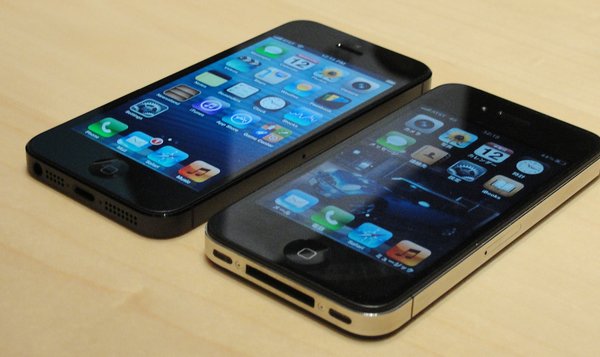LUXURY BRANDS FACE HAZARDS WHEN TESTING LOWER COSTS
For Apple, the devil will be in the details: just how much lower the price of the cheaper iPhone is, and just how much cheaper it looks and feels. If the iPhone is deemed cheap, it could get into the hands of so many people worldwide that it loses power as a status symbol and turns Apple into a maker of commodity products like Dell, Hewlett-Packard or Asus.
Luxury Brands Face Hazards When Testing Lower Costs
September 9, 2013
SAN FRANCISCO — For upscale brands, there is a fine line between “cheaper” and “cheap.” And for Apple, the premium electronics maker, the key is to avoid crossing it.
Apple on Tuesday will introduce two iPhones, including a new lower-cost model targeted at overseas countries where expensive smartphones are out of reach for many consumers.
The addition of a cheaper iPhone could help Apple sell tens of millions more phones. But it could also diminish its reputation as a premium brand.
Many luxury companies have faced this challenge before, with wildly different results. Luxury carmakers have introduced less expensive models, but many efforts have tripped up. Tiffany & Company found so much success with its cheaper “Return to Tiffany” jewelry, that it attracted too many teenagers. And Target has paired up with a variety of high-end fashion designers, often with considerable success.
For Apple, the devil will be in the details: just how much lower the price of the cheaper iPhone is, and just how much cheaper it looks and feels. If the iPhone is deemed cheap, it could get into the hands of so many people worldwide that it loses power as a status symbol and turns Apple into a maker of commodity products like Dell, Hewlett-Packard or Asus.
“It’s hard. It’s an art and a science,” said Milton Pedraza, chief executive of the Luxury Institute, a research firm. “It’s hard to know you’ve gone over the line until you do it.”
Makers of luxury cars have long struggled with how to increase their market share with less expensive models, while still retaining the brand’s cachet and exclusivity.
The marriage of Daimler-Benz and Chrysler failed partly because German engineers developing Mercedes sedans were opposed to sharing parts with mainstream Chrysler models made in the United States. While that preserved the integrity of the Mercedes brand, the company missed a golden opportunity to cut overall costs. Still, Mercedes is taking another stab at lower-cost models, introducing the CLA sedan later this year.
Toyota’s Lexus brand stumbled some when it introduced lower-priced IS sedans that lacked the high-end features and overall glitz of its signature models. Lexus has since addressed the issue by making its entry-level cars more powerful and sporty.
The fashion industry has also experimented with going more mainstream. Ralph Lauren offers lower-priced lines while also having a high-end product. But a partnership with Neiman Marcus and Target was a major failure.
Even the travel industry has tried extending luxury brands, like Starwood’s Aloft line of hotels, which is promoted as “a vision of W Hotels,” a top Starwood brand, and “style at a steal.”
Of course, many retailers try to drive up sales by lowering prices, and that effort has become only more prominent in the Internet era, when consumers have technology tools to browse an entire industry and compare prices in nanoseconds.
“This cheaper iPhone is just one part of a whole trend that is going on that is epically changing the face of this industry,” said Robin Lewis, chief executive of The Robin Report, a retail strategy newsletter. “It’s devaluing the definition of the word ‘value.’ And it’s going to affect every premium brand.”
Still, many analysts believe that if Apple can get consumers — particularly those in China and India — to buy a cheaper version of the phone, those people would be more likely to buy Apple’s premium products in the future.
“It’s going to be the TV, it’ll be the wrist watch, it’ll be the integration in your BMW — all these things later down the road that still carries the premium brand,” said Laurence Isaac Balter, chief market strategist at Oracle Investment Research, which has clients that own Apple shares.
Apple has crossed over into pushing nonpremium products before, and failed. In the 1990s, after Steven P. Jobs had been ousted from the company, Apple started a program offering its software to makers of generic personal computers, and some of those manufacturers were able to build computers faster and cheaper than Apple could. The company, having lost its value to consumers as a premium brand offering an exclusive product, almost went bankrupt.
After Mr. Jobs rejoined the company, Apple reverted to offering premium, higher-priced hardware packaged with exclusive software. And it has carefully walked the tightrope of catering to as large an audience as it possibly can, without shipping dirt-cheap products and falling back into the category of commodity hardware.
Five years ago, Mr. Jobs described the company’s strategy to investors who were asking him about whether Apple would ship a netbook: miniature notebooks that could be bought for as little as $200. His answer was, in short, no.
“There are some customers which we chose not to serve,” Mr. Jobs said.
Now that Apple is under a new leader, Timothy D. Cook, who is facing pressure from investors to increase the company’s profit growth, the question is whether Apple’s strategy will change with a cheaper iPhone.
Signs suggest that the strategy will not change much. Analysts expect Apple to take the current, soon-to-be-outdated iPhone 5 and replace its back with plastic. And they predict it will cost between $300 and $400 at full price — significantly cheaper than the current iPhone, at $650, but still more expensive than some of the dirt-cheap Android phones offered in China and India.
Still, offering a lower-cost iPhone will be more challenging than just reducing its cost. Apple will need to distinguish its high-end iPhone from a lower-end one. For one thing, Apple is expected to introduce the ability to unlock a phone by scanning a fingerprint, a feature that could be available on only the more expensive model.
And once a cheaper offering is made, Apple will likely have to face a similar predicament every year. For every phone with new features, the company will need to introduce a second phone without some of the same capabilities.
Greg Portell, a partner of A.T. Kearney, a global management consulting firm, said that could detract from Apple’s brand proposition of being a provider of easy-to-use products that all work together seamlessly.
“The challenge for Apple is going to be to identify the element of functionality they can strip away without decaying the brand promise of ease of functionality and connectivity,” Mr. Portell said. “They’re reintroducing the barriers that they’ve already taken away.”
Stephanie Clifford and Bill Vlasic contributed reporting.
Source: http://mobile.nytimes.com/2013/09/10/technology/guarding-a-luxury-aura.html?h=wAQHJ6PpG&s=1&pagewanted=all&_r=0&




